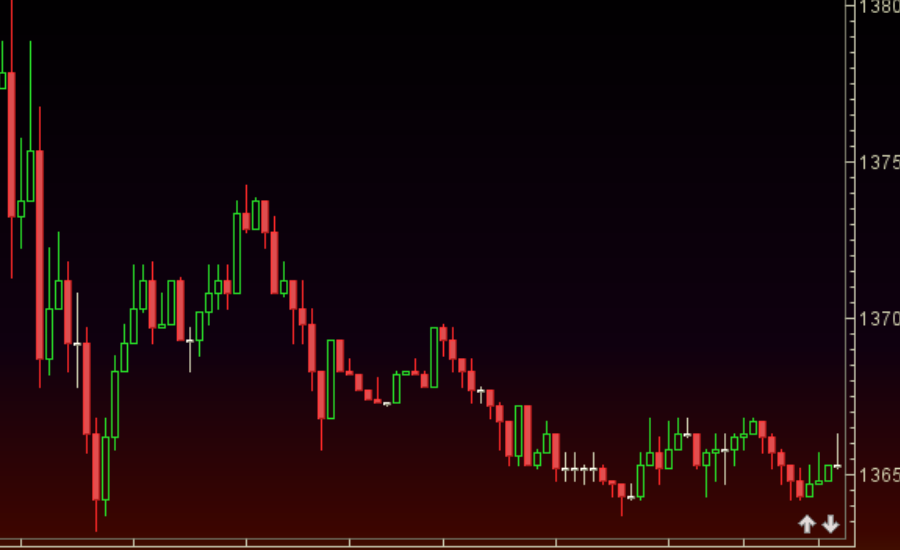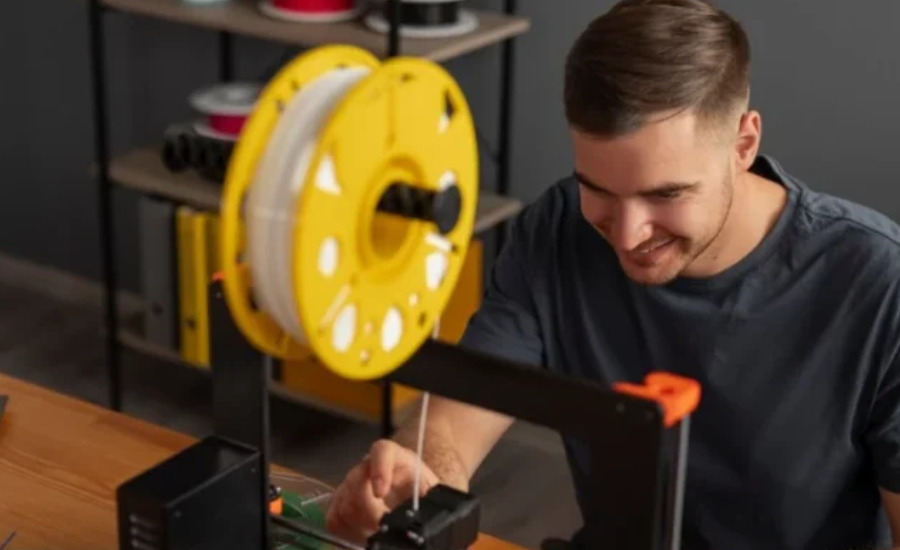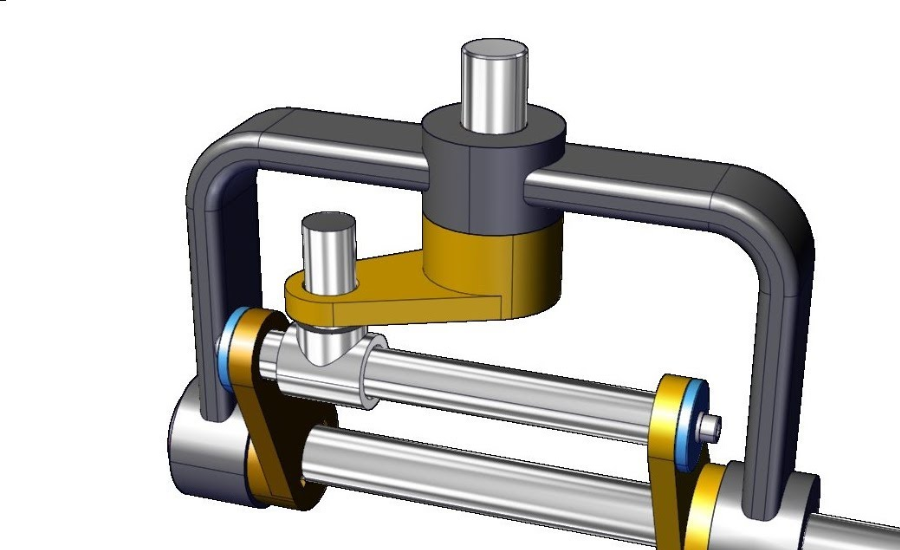Introduction
In an era where sustainable energy solutions are more crucial than ever, the ability to convert kinetic energy into usable electricity is gaining importance. The Widner Mobility Oscillator represents a breakthrough in this field, poised to change the way we capture and utilize energy from motion. This cutting-edge technology has the potential to make a significant impact across diverse industries, from wearable devices to large-scale infrastructure projects, offering a sustainable alternative to traditional power sources.
Understanding the Widner Mobility Oscillator
The Widner Mobility Oscillator represents a cutting-edge advancement in energy technology, engineered to convert kinetic energy into usable electrical power. By leveraging motion and vibrations, this innovative device captures mechanical energy and transforms it into electricity. Its ability to operate efficiently across different environments makes it a valuable asset for various applications. Below is a detailed breakdown of how this groundbreaking technology works and its potential uses.

What is the Widner Mobility Oscillator?
The Widner Mobility Oscillator is a sophisticated device designed to harness and convert kinetic energy, which is generated through movement or vibrations, into electrical power. This transformation is achieved through a unique oscillation mechanism that captures mechanical energy and efficiently converts it into electricity. The technology’s adaptability and efficiency make it an attractive option for powering devices without relying on traditional energy sources.

Key Features of the Widner Mobility Oscillator
Advanced Kinetic Energy Conversion
At its core, the Widner Mobility Oscillator excels in capturing kinetic energy from various sources of motion. This includes everything from the movement of people and vehicles to vibrations from environmental factors. The device is engineered to absorb this energy effectively, ensuring that even minor movements can be converted into substantial electrical power.
Unique Oscillation Mechanism
The oscillator utilizes a distinctive oscillation mechanism to process the captured kinetic energy. This mechanism converts the mechanical energy into a steady oscillatory motion, which is then used to drive an internal generator. The result is a reliable generation of electrical power from mechanical movement, showcasing the device’s efficiency and innovation.

Versatility and Applications
The Widner Mobility Oscillator’s design allows it to be used across various sectors, making it a versatile solution for sustainable energy needs. Here’s how it can be applied in different fields:
Wearable Technology
In wearable devices, such as fitness trackers and smartwatches, the Widner Mobility Oscillator can provide power by capturing the wearer’s movements. This eliminates the need for frequent battery replacements or recharges, enhancing the convenience and sustainability of these devices.
Transportation
In the transportation industry, the oscillator can be integrated into vehicles to capture and convert kinetic energy generated by motion. This additional power source can support electric vehicles or improve the energy efficiency of conventional vehicles, potentially reducing overall energy consumption.
Smart Infrastructure
The oscillator can also be embedded in infrastructure projects like bridges, roads, and buildings. By capturing vibrations and movements within these structures, it can power various systems, including sensors and lighting. This contributes to creating self-sustaining and energy-efficient urban environments.
Consumer Electronics
Portable electronics, including smartphones and tablets, can benefit from the Widner Mobility Oscillator by utilizing energy from user movements. This advancement could reduce dependence on traditional batteries and chargers, offering a more sustainable approach to powering everyday devices.
How the Widner Mobility Oscillator Operates
The Widner Mobility Oscillator represents a significant advancement in energy technology by effectively capturing and converting kinetic energy into electrical power. Its operation involves a two-step process: capturing the kinetic energy and converting it into usable electricity through an advanced oscillation mechanism.
1. Energy Capture
Broad Range of Motion Sources
The Widner Mobility Oscillator is designed to capture kinetic energy from a variety of sources. This includes:
- Human Movement: Energy can be harvested from the motion of individuals, such as walking or running, making it ideal for wearable technologies.
- Vehicle Motion: The device can absorb energy from the movement of cars, trucks, or other vehicles, which can be beneficial for both electric and conventional vehicles.
- Environmental Vibrations: It also captures vibrations from natural sources, such as wind or seismic activity, providing a sustainable energy source in various environments.
Efficient Energy Absorption
The core technology of the Widner Mobility Oscillator ensures efficient absorption of kinetic energy. Key features include:
- High Sensitivity Sensors: These sensors detect and measure movement with precision, allowing for optimal energy capture.
- Adaptive Design: The oscillator’s design adjusts to different types of motion and vibrations, ensuring consistent energy absorption regardless of the source.
2. Oscillation Mechanism
Transformation of Mechanical Energy
After capturing the kinetic energy, the Widner Mobility Oscillator utilizes a specialized oscillation mechanism to convert it into electrical power. This process involves:
- Oscillatory Motion Generation: The captured mechanical energy is transformed into consistent oscillatory motion through a mechanical system within the device.
- Internal Generator Activation: The oscillatory motion drives an internal generator, which converts the mechanical motion into electrical energy. This generator is engineered to handle varying levels of motion and energy input.
Key Components and Technology
The efficiency and reliability of the Widner Mobility Oscillator are attributed to its advanced components and technology:
- Precision Engineering: High-quality materials and precision engineering ensure that the oscillation mechanism operates smoothly and reliably.
- Energy Conversion Efficiency: The internal generator is optimized to maximize energy conversion, minimizing energy loss and improving overall performance.
Benefits of the Oscillation Mechanism
Enhanced Power Generation
The oscillation mechanism’s design contributes to enhanced power generation, which includes:
- Stable Output: By converting mechanical energy into a stable oscillatory motion, the oscillator ensures a consistent power output.
- Scalability: The technology is scalable, allowing it to be used in various applications from small wearable devices to large-scale infrastructure projects.
Durability and Reliability
The Widner Mobility Oscillator is built to be durable and reliable in diverse conditions:
- Robust Construction: The device is constructed to withstand environmental stresses and maintain performance over time.
- Maintenance-Free Operation: Designed for minimal maintenance, the oscillator offers long-term reliability and reduces the need for frequent servicing.
Applications of the Widner Mobility Oscillator
The Widner Mobility Oscillator’s potential applications span multiple industries, offering a new way to harness energy from movement. Some of the most promising areas include:
1. Wearable Technology
In the realm of wearable technology, the Widner Mobility Oscillator could be a game-changer. It has the potential to power devices such as fitness trackers, smartwatches, and health monitoring systems. By utilizing the motion generated by the wearer, these devices could operate without the need for frequent recharging, enhancing user convenience and reducing dependence on conventional batteries.
2. Transportation
The transportation sector stands to benefit significantly from this technology. When installed in vehicles, the oscillator can capture kinetic energy produced by motion, providing an additional power source for electric vehicles or enhancing energy efficiency in traditional vehicles. This could lead to reduced energy consumption and lower operating costs, particularly in the context of long-distance travel or commercial transport.
3. Smart Infrastructure
The application of the Widner Mobility Oscillator in smart infrastructure is another area of great potential. By embedding the device in structures such as bridges, roads, or buildings, it can capture energy from vibrations and movements. This energy can then be used to power sensors, lighting, and other critical systems, contributing to the development of self-sustaining, energy-efficient urban environments.
4. Consumer Electronics
Portable electronics, including smartphones, tablets, and laptops, could also benefit from the energy provided by the Widner Mobility Oscillator. By harnessing energy from everyday movements, these devices could reduce their reliance on traditional batteries and chargers, offering a more sustainable and convenient power solution for consumers.
The Impact of the Widner Mobility Oscillator
The introduction of the Widner Mobility Oscillator holds the promise of far-reaching impacts across various sectors:
1. Sustainability
By tapping into kinetic energy as a power source, the oscillator promotes the use of renewable energy. This reduces the dependence on fossil fuels and helps lower carbon footprints, aligning with global sustainability goals. The widespread adoption of this technology could play a key role in the transition to a more sustainable energy landscape.
2. Cost Efficiency
In the long term, generating power from motion could lead to significant cost savings. This is particularly true in industries with high energy demands or in remote locations where traditional power generation may be costly or challenging. The Widner Mobility Oscillator offers a cost-effective alternative, potentially lowering energy expenses across various applications.
3. Enhanced Mobility
For consumers, the Widner Mobility Oscillator provides greater mobility by reducing the need for external power sources. Devices powered by this technology could operate for longer periods without the need for recharging, offering increased convenience and flexibility. This could be particularly beneficial for individuals who rely on portable electronics in their daily lives.
Challenges and Considerations
While the Widner Mobility Oscillator offers exciting possibilities, it also faces several challenges that must be addressed for widespread adoption:
1. Efficiency Optimization
One of the primary challenges in kinetic energy harvesting is optimizing the energy conversion process. Ensuring maximum output from the captured kinetic energy is crucial for the success of this technology. Continued research and development will be necessary to enhance the efficiency and effectiveness of the Widner Mobility Oscillator.
2. Durability and Reliability
For the Widner Mobility Oscillator to be viable in applications such as transportation or infrastructure, it must be durable and capable of withstanding various environmental conditions and the stresses of constant motion. Developing a robust and reliable design will be essential to ensure the device’s longevity and performance in real-world settings.
3. Market Adoption
Achieving widespread adoption of the Widner Mobility Oscillator will require demonstrating its cost-effectiveness and reliability. Convincing industries to integrate this new technology into their existing systems may require substantial effort and investment. Building awareness and showcasing successful case studies will be key strategies in overcoming this challenge.
Key Facts about the Widner Mobility Oscillator
- Technology: Converts kinetic energy from movement or vibrations into electrical power.
- Mechanism: Utilizes an oscillation mechanism to transform mechanical energy into electricity.
- Applications: Wearable technology, transportation, smart infrastructure, consumer electronics.
- Benefits: Sustainable energy source, cost savings, increased device mobility.
- Challenges: Efficiency improvements, durability, market adoption.
FAQs
Q: What is the Widner Mobility Oscillator?
A: The Widner Mobility Oscillator is a device that converts kinetic energy from movement or vibrations into electrical power using an oscillation mechanism.
Q: How does it work?
A: It captures kinetic energy, converts it into oscillatory motion, and drives an internal generator to produce electricity.
Q: What are its applications?
A: It can be used in wearable technology, transportation, smart infrastructure, and consumer electronics.
Q: What are the benefits?
A: It offers sustainability, cost efficiency, and enhanced mobility by reducing the need for frequent recharging.
Q: What challenges does it face?
A: Challenges include optimizing efficiency, ensuring durability, and achieving market adoption.
Conclusion
The Widner Mobility Oscillator represents a significant advancement in the field of kinetic energy harvesting. Its ability to efficiently convert mechanical energy from various sources into electrical power positions it as a versatile and sustainable technology with broad applications. From enhancing wearable technology and supporting electric vehicles to powering smart infrastructure and portable electronics, the oscillator offers numerous benefits, including sustainability, cost efficiency, and increased mobility for users.
Despite its promising potential, the Widner Mobility Oscillator faces challenges that must be addressed, such as optimizing energy conversion, ensuring durability, and achieving market adoption. Continued research and development will be crucial in overcoming these hurdles and realizing the full potential of this innovative technology. As it evolves, the Widner Mobility Oscillator could play a key role in advancing the transition to a more sustainable and energy-efficient future.
Read More: US Wire Magazine
